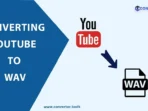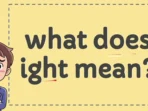What? Yes it is. No, not really. When people talk about buying or renting a portable green screen what they are actually getting is a chroma key cloth that just happens to be green in colour. Actually, more accurately it’s sort of teal. I’m not sure why this colour was chosen but obviously it doesn’t work very well – otherwise everyone would have one right? The trouble with the colour ‘teal’ for chroma keying is that unlike good old reliable chroma key blue, which works everywhere all the time, teal fails miserably when there is even a small amount of orange or yellow in the background.
The biggest mistakes people make when using a portable green screen:
- That’s why you need to make sure that when you use a portable green screen you test it first on your own live action video footage.
- If at all possible try to use an ultra-cheap green backdrop first – some people advocate testing with a piece of green fabric but I find that even an ultra-cheap backdrop is more rigid, takes up less space and can be used as a regular chroma key backdrop too if required. This way you will have enough time to discover any major faults before actually using the expensive green backdrop for your shoot.
- One of my favorites is hanging white duvetyne material behind (see how to make your own below).
- A more expensive but very portable option is using green PVC on an aluminium frame. TIP: if you are using a backdrop that has only one crossbar you can prop it up by filling some carrier bags with water and wedging them between the cross bar and the ground. If you fill the bags too much they will probably split, so maybe stick some tape over them first or use less water or tie knots in the carrier bags. Or get someone else to hold it for you. Maybe get two people to hold it if it’s especially windy.
- Again though, try this out home before taking it out on the road. I would also advise testing the backdrop by having someone or yourself present in shot. This way if it fails on your own test footage you will know exactly how it is going to look when you try to chroma key people moving around in front of it.
- Another thing to consider is that even though this green screen is portable, you may still need an assistant. If the surface area of the backdrop cloth is large enough then another pair of hands might not be required but if one person has to hold the whole thing up them for any length of time they are going to get very tired very quickly. You might choose to use some kind of stand instead – a stick with a hook on it
- The biggest mistakes people make when using a portable green screen are lighting, and where they’re standing. The first thing you’ll need to do is create a DIY green screen light. Â this can be achieved by using aluminum foil and taping it over the light source, Â which in this case will be your lamp.
- By positioning yourself near a wall or backdrop you are creating an easy way for you to fill in any white space that may appear after you take your picture.
- You will then want to make the image size as large as possible before taking it into Photoshop, because if it’s too small of an image your details might get lost when you attempt to enlarge it.
- Once done edit the brightness levels of the photo to where your green screen is no longer visible, keeping the rest of the photo normal.
- Once done with that you will need to save the file as a png because it has a transparent background. You will also want to make sure that pixels are not blurred or distorted for this process. You will now have an image with your subject on it and its background transparent!
Conclusion:
With all the prep work out of the way, you can now chroma keys your subject in using any chroma keying software. For this example, I used After Effects. Â You clicks on your magic wand tool and adjust it to make sure that it is set to ‘contiguous’.
You then click on the area where you want to start selecting colors from, so as many colors as possible without going outside of the lines.
Once you have selected a starting point, you will need to expand your selection so that more pixels are being selected without leaving gaps between them.







